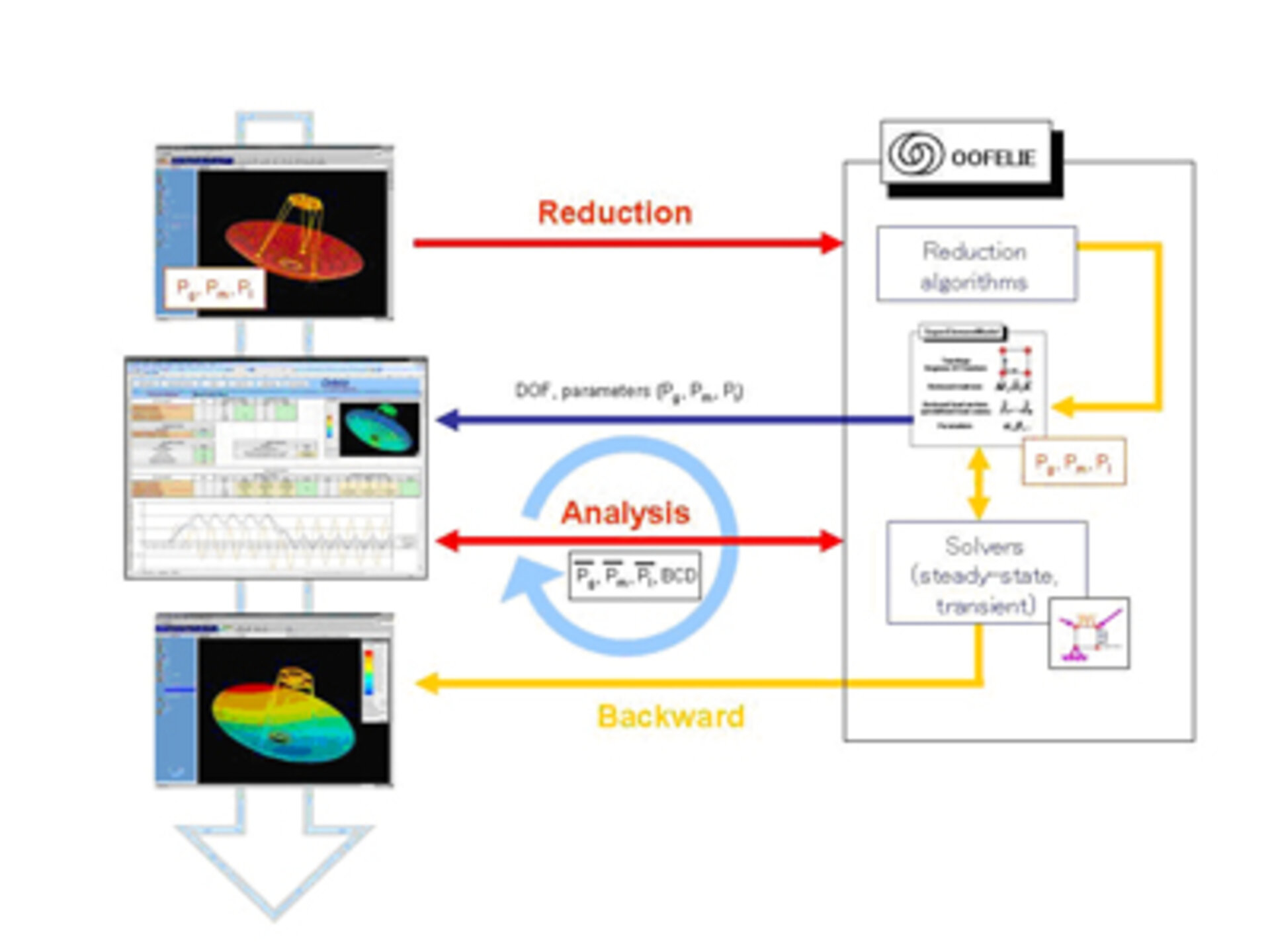Reduced Model Simulations for the CDF
Accurate simulations of complex systems require complex numerical models and are consequently expensive in terms of computation time, whereas preliminary design phases require fast simulations in order to evaluate, at system level, multiple technical solutions.
By combining the high fidelity of complex models with simplified reduced models and the fast design modification approach that allows rapid decision trade-offs it was hoped that a significant time saving could be made.
The principle of model reduction consists in processing numerical models that are costly in terms of simulation time, extract models that involve few variables but remain representative of the model behaviour of interest. Both static and dynamic reduction methods have been applied to the existing models.
To investigate and demonstrate the possibility of enhancing the efficiency of the concurrent design process by the model reduction method, a contract was placed by ESA with Open Engineering of Belgium.
The aim was the generalisation and adaptation of well known reduction methods, based on model projection techniques, to multidisciplinary models involving strong coupling between physics, as the ones used in the CDF.
The implementation involved adding multi-physics reduction algorithms to the OOFELIE ® commercial software, a computational structure mechanisms code product, based on finite elements, improving its interfacing capabilities and enabling it to communicate with other software. Additionally a Graphical User Interface (GUI) was introduced through MS Excel.
A challenging aspect of the project was the ability to establish a dialogue between the various pieces of software. This was achieved by interfacing OOFELIE ® physical classes using the Python language.
A generic and open framework has been introduced that will support further development as well as producing algorithms that allow the reduction of parameterised models in structural mechanics, thermo-mechanics, optics and piezoelectricity. This allows engineers and designers to access pre-computed and parameterized reduced models in order to perform rapid multidisciplinary analyses at a relatively high level of accuracy.


